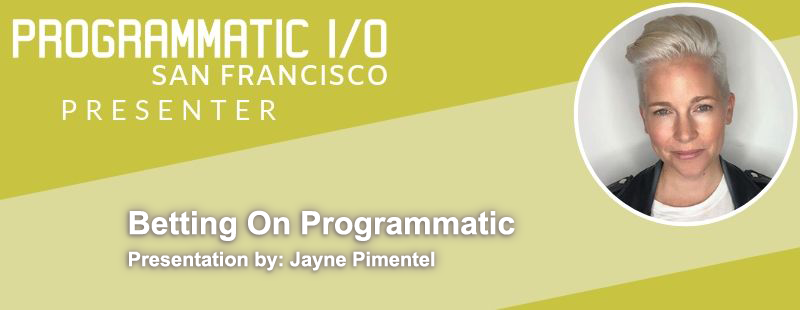Betting On Programmatic

Successfully in-housing your programmatic is like Tiger Woods winning the Masters — everyone starts off thinking, “there’s no way this could ever happen…”
But as you stick with it, accumulating small wins, your odds slowly go up and up until suddenly you’ve done it, defying everyone’s expectations.
Or at least, that’s been Jayne Pimentel’s experience. As senior director of growth marketing at DraftKings, she just spent the last 2 years in-housing her creative and media buying teams.
With in-house, Jayne’s been able to shrink her team while exceeding performance goals. However, she also says that in-housing programmatic is one of the most resource-taxing things you can ever do for your company.
So how do you channel your inner Tiger Woods and pull off the impossible? According to Jayne, it’s all about breaking the larger mission down into digestible components.
By strategically attacking these smaller tasks, you get those tiny wins that eventually drive your success.
So what does that process look like exactly? Jayne breaks it down in detail…
HOW TO: Strategically in-house your programmatic advertising
1. Use a 3-pronged plan of attack to boost your chances of success
- Foundational data layer: spend most of your time here — audit your data across all your channels, then cohort it so it can be used across every action and marketing team.
- Automation and operation: automate as many day-to-day tasks as possible. If you plan to build DSP in-house, make it capable of managing 2-3X your estimated number of campaigns — you’re going to need it.
- Decisioning: this third step should take the least amount of time, built upon the 90% of the effort you put into steps 1 and 2. Don’t make your decisions based on front-end vanity metrics like CPI, instead bring everything back to revenue.
2. Use your 3-pronged attack to tackle 5 major categories
- DSP: Finding a partner may be the best option. If you choose to go that route, consider whether you want managed-service or just UI. Jayne used → Beeswax
- Algorithm/Data Science: In the short-term, you can use a partner, but in the long-term, aim to build your own algorithm. Remember to optimize it for revenue, not front-end metrics.
- Creative management: Break each creative down into several components to optimize at a granular level — you want IDs within IDs within IDs.
- Campaign management and ops: Plan on either hiring more people or hiring external expertise to help with management. At this stage, you also need to decide whether you want to use in-house programmatic as an extension, or as the central focus of your strategy.
- More servers/more conversation with IT: You’ll need a streamlined process around managing and storing your digital files — work this out with your IT team ahead of time.
Of all 5, put your primary focus on executing against the first 3 — DSP, algorithm, and creative management.
3. Set expectations with your company, team, and self
You’re going to fail 75% of the time — plan for it, and don’t let it impact your credibility. You also need to be patient — Jayne took 2 years before she finally started realizing savings.
With anything less than a 2-year plan, you’re kidding yourself. Save yourself the headache and just partner with an agency.
4. Join a community of like-minded programmatic advertisers
Jayne created a Slack channel to foster transparency around the in-housing process. If you are willing to collaborate and share insights, you’re welcome to join → #in-houseprogrammatic
5. Build a leave-behind team once you are up and running
Once it’s built you can’t just drop it and move on — train a team to stay behind and make sure things continue to run smoothly.







